Yanan Xu
Jointly Modeling Heterogeneous Student Behaviors and Interactions Among Multiple Prediction Tasks
Mar 25, 2021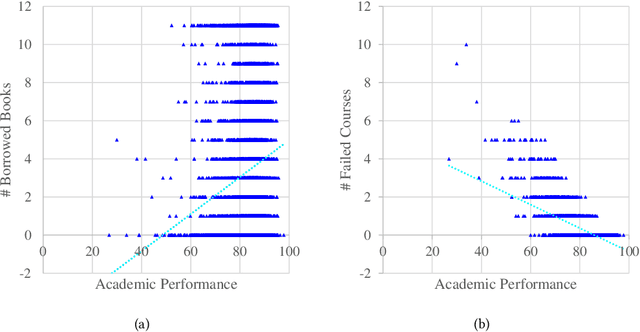
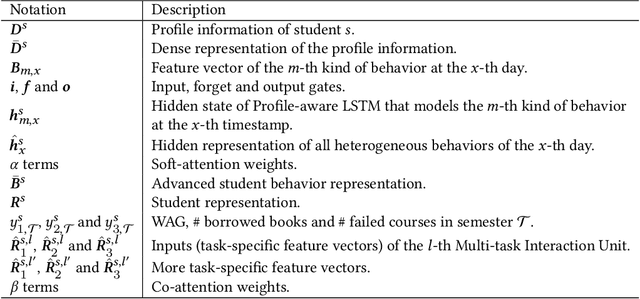
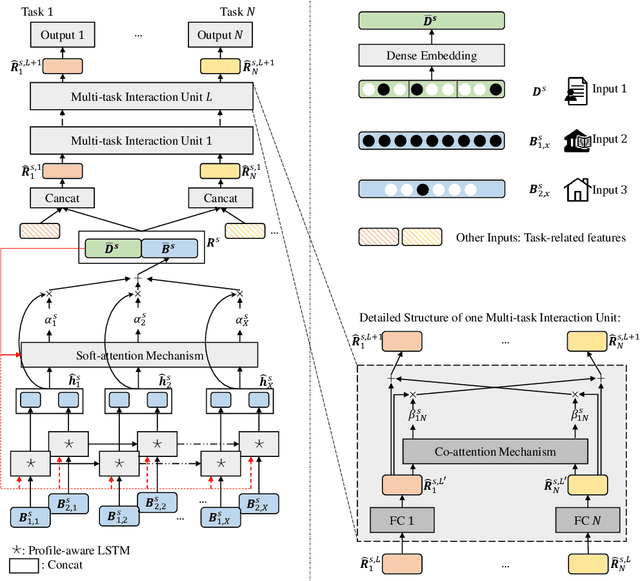
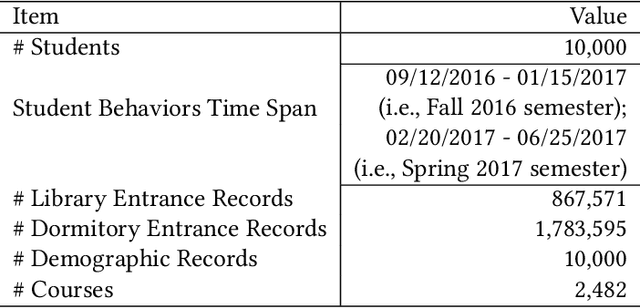
Abstract:Prediction tasks about students have practical significance for both student and college. Making multiple predictions about students is an important part of a smart campus. For instance, predicting whether a student will fail to graduate can alert the student affairs office to take predictive measures to help the student improve his/her academic performance. With the development of information technology in colleges, we can collect digital footprints which encode heterogeneous behaviors continuously. In this paper, we focus on modeling heterogeneous behaviors and making multiple predictions together, since some prediction tasks are related and learning the model for a specific task may have the data sparsity problem. To this end, we propose a variant of LSTM and a soft-attention mechanism. The proposed LSTM is able to learn the student profile-aware representation from heterogeneous behavior sequences. The proposed soft-attention mechanism can dynamically learn different importance degrees of different days for every student. In this way, heterogeneous behaviors can be well modeled. In order to model interactions among multiple prediction tasks, we propose a co-attention mechanism based unit. With the help of the stacked units, we can explicitly control the knowledge transfer among multiple tasks. We design three motivating behavior prediction tasks based on a real-world dataset collected from a college. Qualitative and quantitative experiments on the three prediction tasks have demonstrated the effectiveness of our model.
Modeling Long-Term and Short-Term Interests with Parallel Attentions for Session-based Recommendation
Jun 27, 2020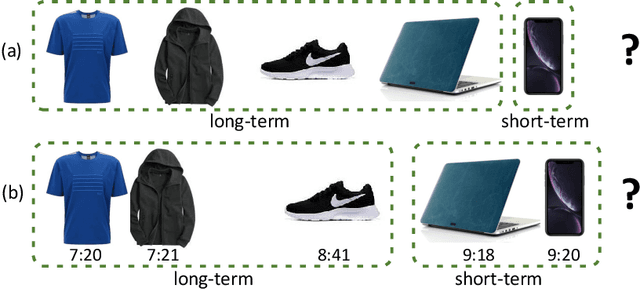

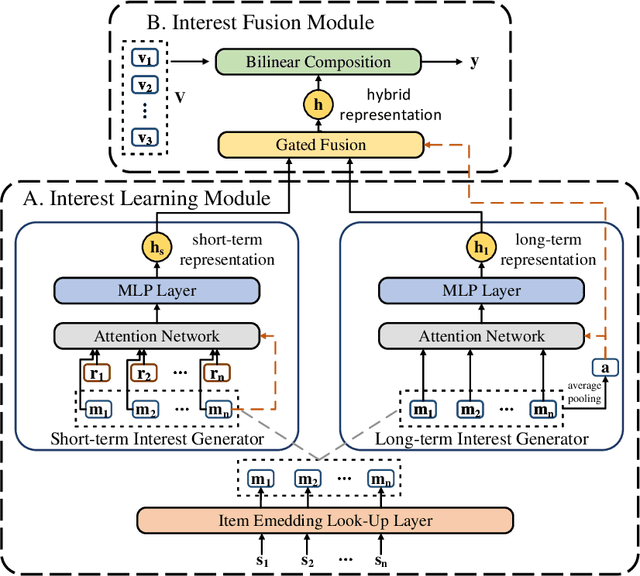
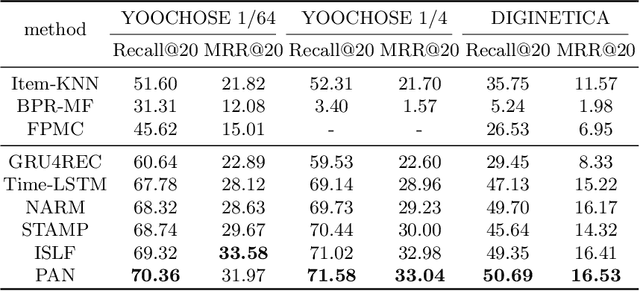
Abstract:The aim of session-based recommendation is to predict the users' next clicked item, which is a challenging task due to the inherent uncertainty in user behaviors and anonymous implicit feedback information. A powerful session-based recommender can typically explore the users' evolving interests (i.e., a combination of his/her long-term and short-term interests). Recent advances in attention mechanisms have led to state-of-the-art methods for solving this task. However, there are two main drawbacks. First, most of the attention-based methods only simply utilize the last clicked item to represent the user's short-term interest ignoring the temporal information and behavior context, which may fail to capture the recent preference of users comprehensively. Second, current studies typically think long-term and short-term interests as equally important, but the importance of them should be user-specific. Therefore, we propose a novel Parallel Attention Network model (PAN) for Session-based Recommendation. Specifically, we propose a novel time-aware attention mechanism to learn user's short-term interest by taking into account the contextual information and temporal signals simultaneously. Besides, we introduce a gated fusion method that adaptively integrates the user's long-term and short-term preferences to generate the hybrid interest representation. Experiments on the three real-world datasets show that PAN achieves obvious improvements than the state-of-the-art methods.
ALCNN: Attention-based Model for Fine-grained Demand Inference of Dock-less Shared Bike in New Cities
Sep 25, 2019
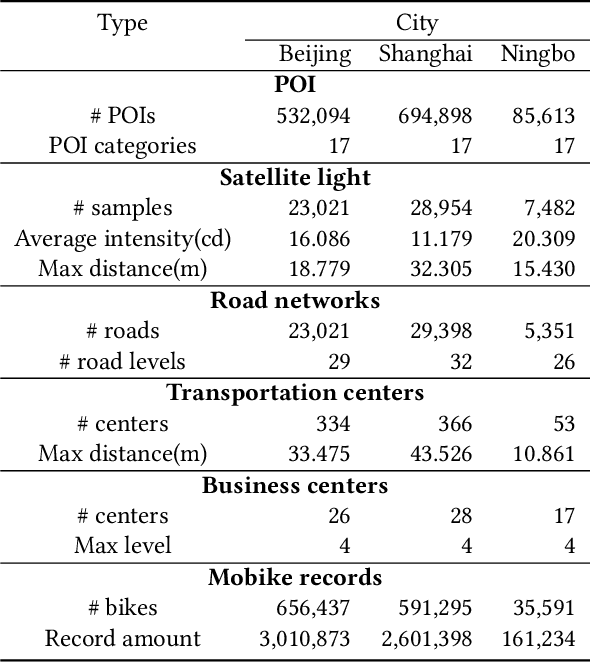
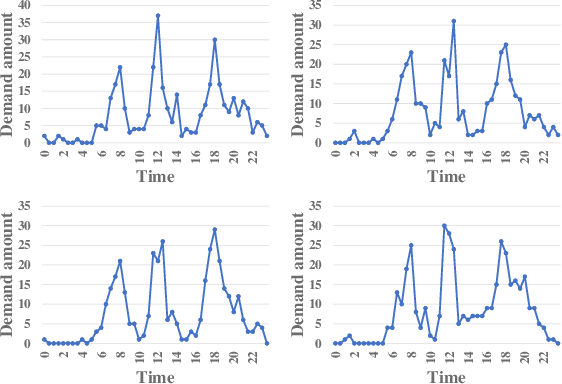
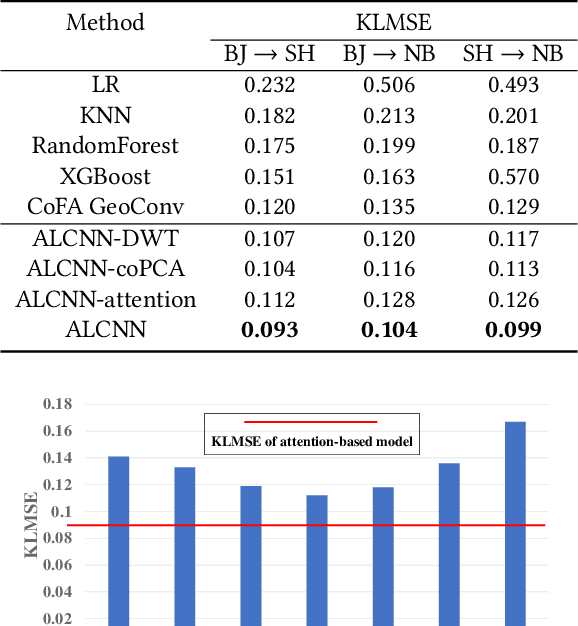
Abstract:In recent years, dock-less shared bikes have been widely spread across many cities in China and facilitate people's lives. However, at the same time, it also raises many problems about dock-less shared bike management due to the mismatching between demands and real distribution of bikes. Before deploying dock-less shared bikes in a city, companies need to make a plan for dispatching bikes from places having excessive bikes to locations with high demands for providing better services. In this paper, we study the problem of inferring fine-grained bike demands anywhere in a new city before the deployment of bikes. This problem is challenging because new city lacks training data and bike demands vary by both places and time. To solve the problem, we provide various methods to extract discriminative features from multi-source geographic data, such as POI, road networks and nighttime light, for each place. We utilize correlation Principle Component Analysis (coPCA) to deal with extracted features of both old city and new city to realize distribution adaption. Then, we adopt a discrete wavelet transform (DWT) based model to mine daily patterns for each place from fine-grained bike demand. We propose an attention based local CNN model, \textbf{ALCNN}, to infer the daily patterns with latent features from coPCA with multiple CNNs for modeling the influence of neighbor places. In addition, ALCNN merges latent features from multiple CNNs and can select a suitable size of influenced regions. The extensive experiments on real-life datasets show that the proposed approach outperforms competitive methods.
 Add to Chrome
Add to Chrome Add to Firefox
Add to Firefox Add to Edge
Add to Edge